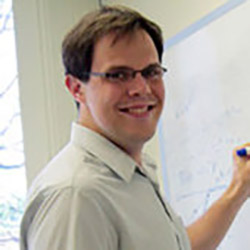Astro Seminar: Brian Metzger: "Heavy Element Nucleosynthesis from the Birth of Black Holes"

When:
Tuesday, April 25, 2023
3:45 PM - 4:45 PM CT
Where: 1800 Sherman Avenue, 7-600, Evanston, IL 60201 map it
Audience: Faculty/Staff - Student - Post Docs/Docs - Graduate Students
Contact:
Joan West
(847) 491-3645
joan.west@northwestern.edu
Group: Physics and Astronomy: Astronomy Seminars
Category: Academic
Description:
The origin of the heaviest elements in our universe - those produced via the rapid neutron capture process ("r-process") - remains a question of intense debate. Although the kilonova emission that accompanied GW170817 revealed neutron star mergers to be an important r-process source, several independent observations hint that mergers may not be the only source, particularly at low metallicity. I will argue that mass-loaded outflows from the accretion disk feeding the newly-formed black hole - that responsible for powering the gamma-ray burst (GRB) jet - was the dominant source of r-process elements in GW170817. However, broadly similar accretion flows are created in another explosive transient - the collapse of massive rotating stars ("collapsars") which give rise to GRBs of longer duration, and simple estimates show that the integrated r-process yields of collapsars could compete with those of neutron star mergers over the history of the Galaxy. I will discuss observational tests of whether collapsars produce r-process elements using infrared observations of GRB supernovae, particularly with JWST and the Roman Space Telescope.
Brian Metzger, Professor, Columbia University, New York
Host: Professor Giacomo Fragione